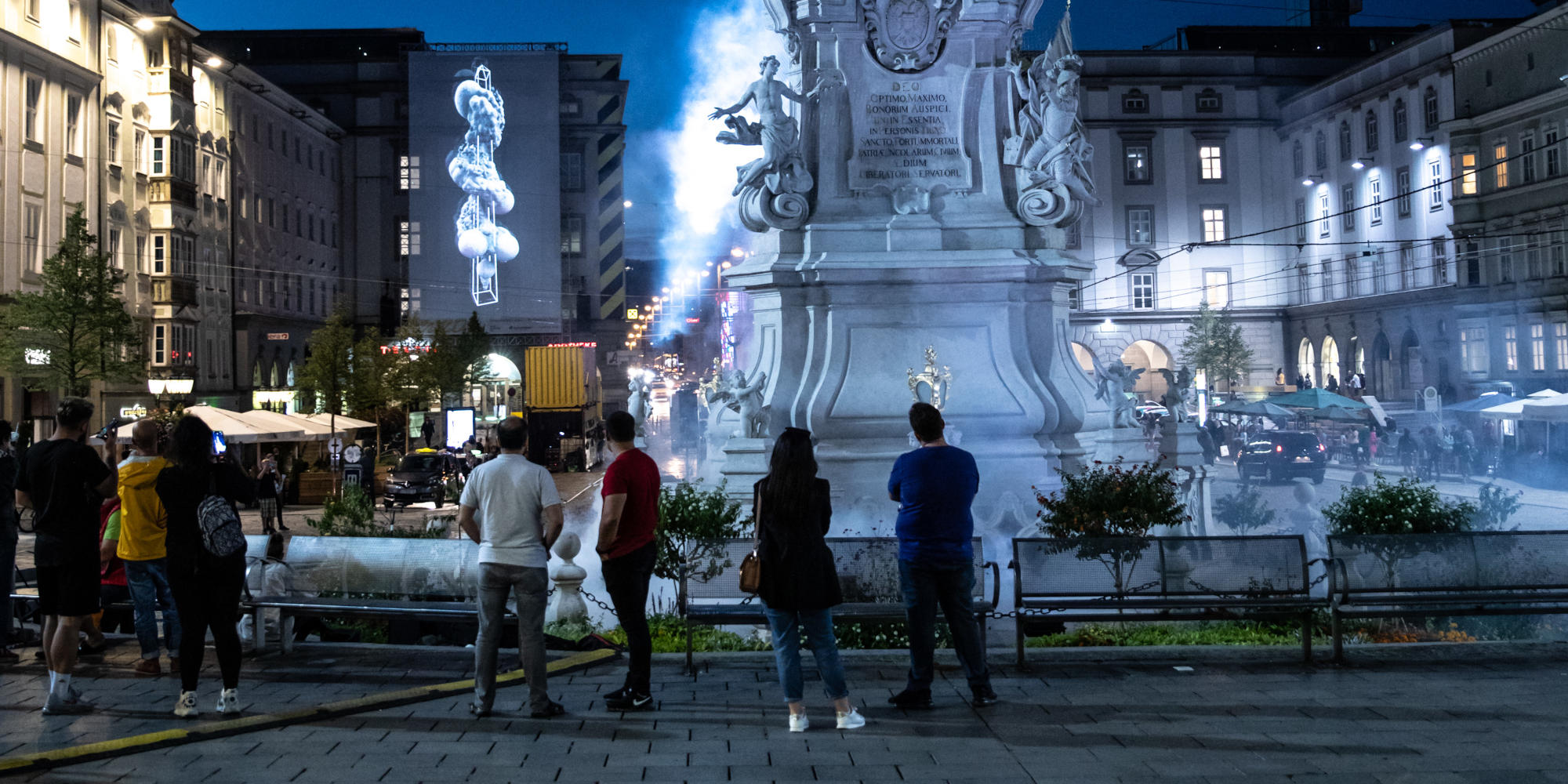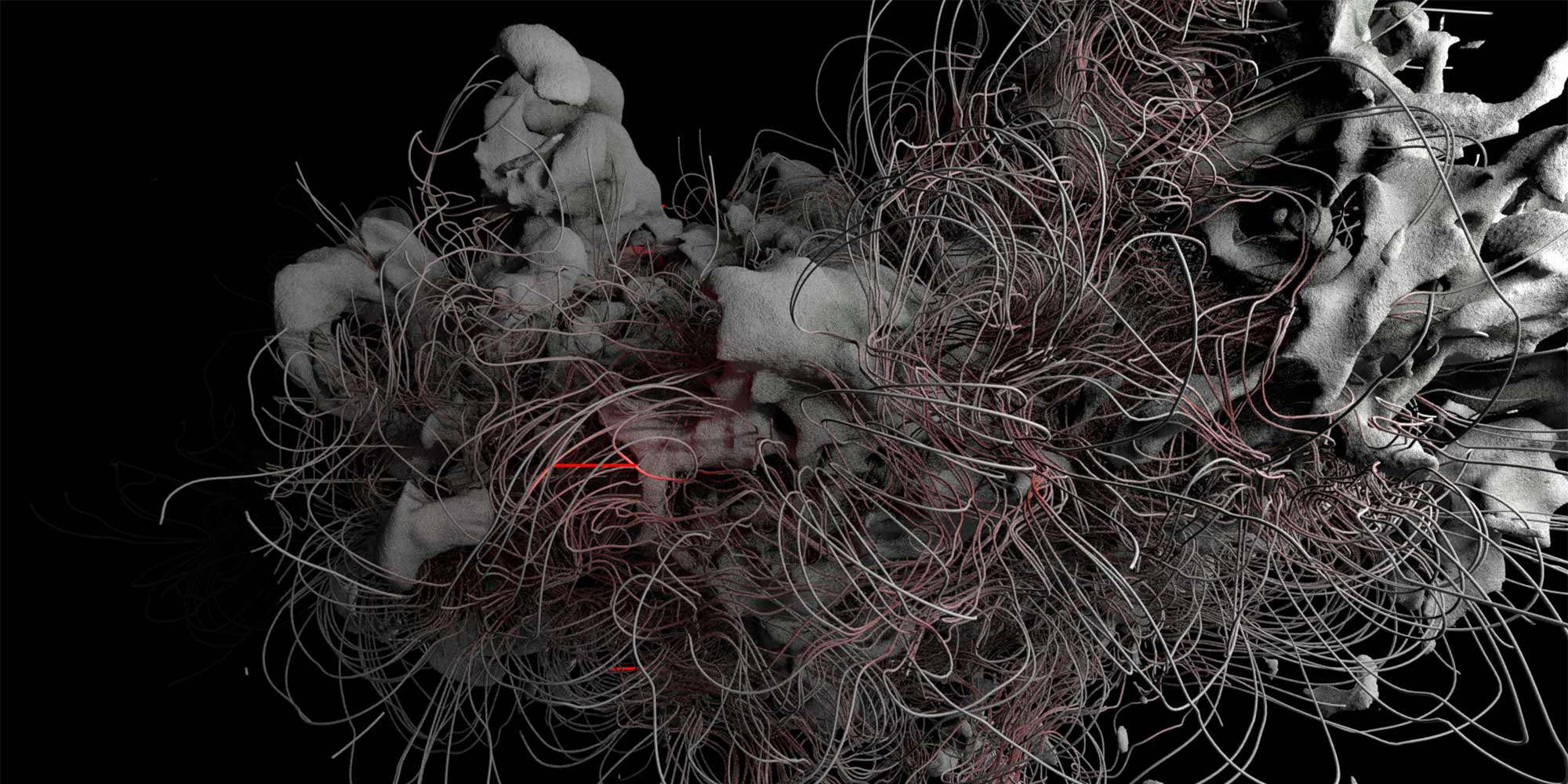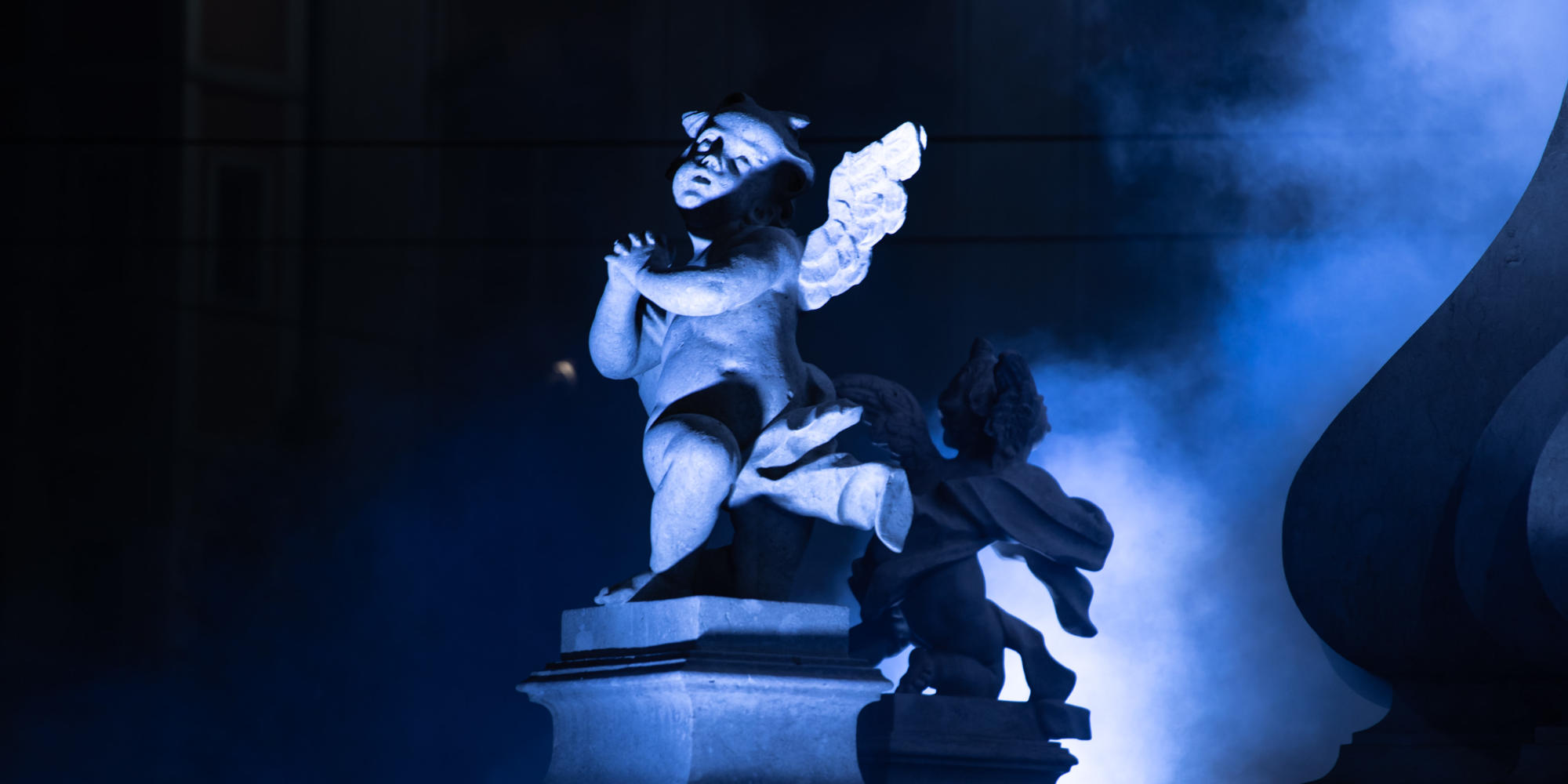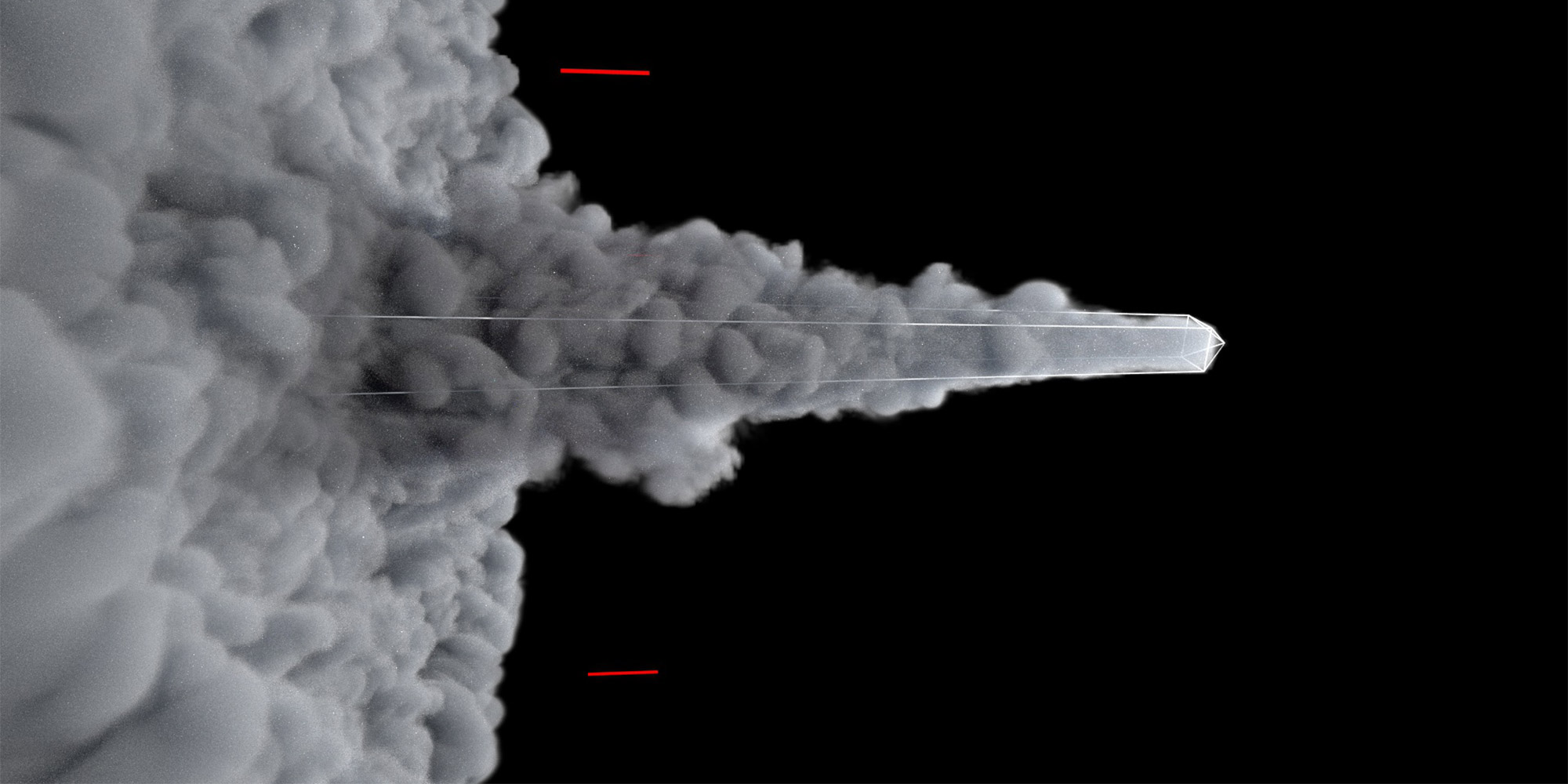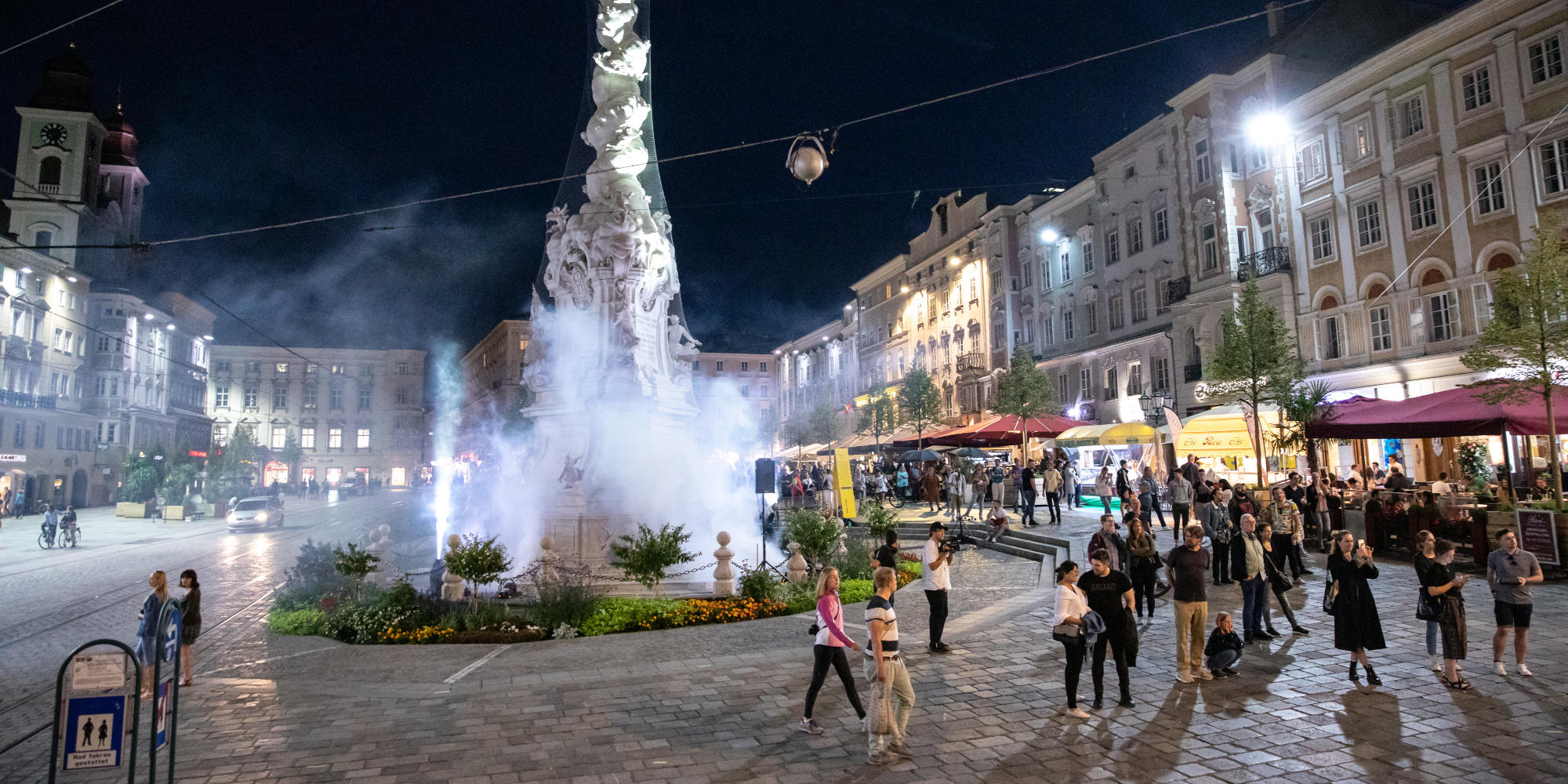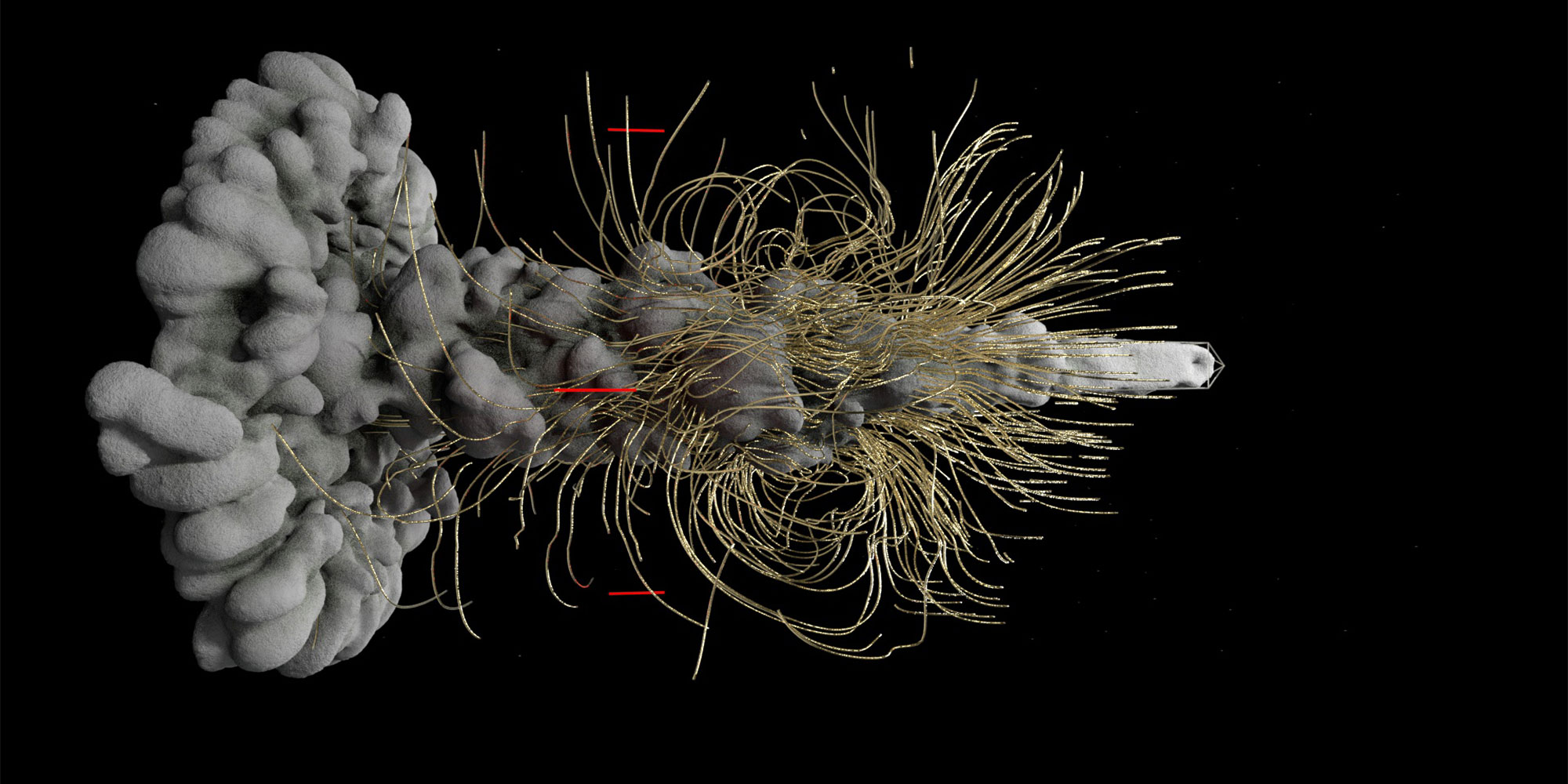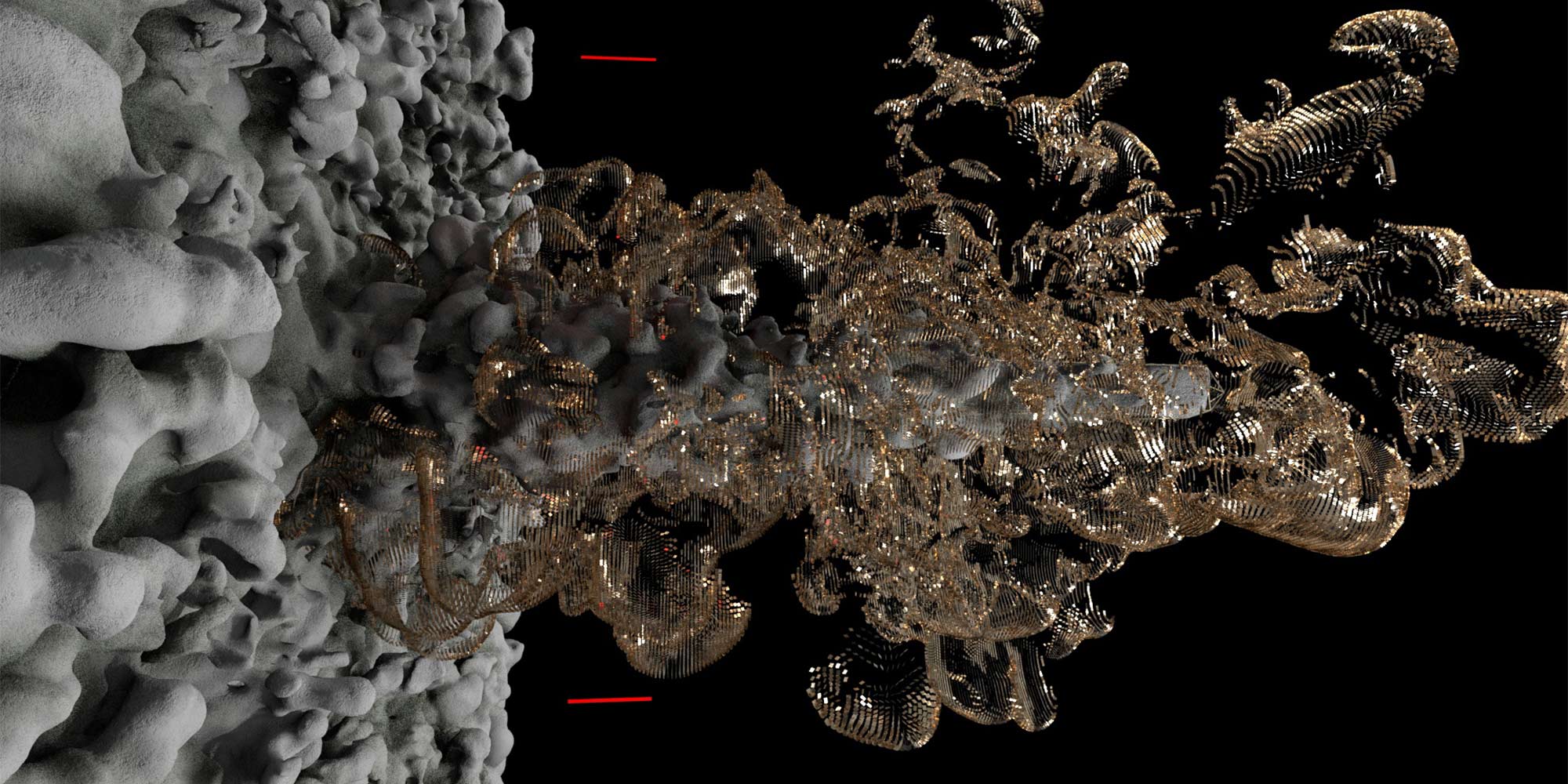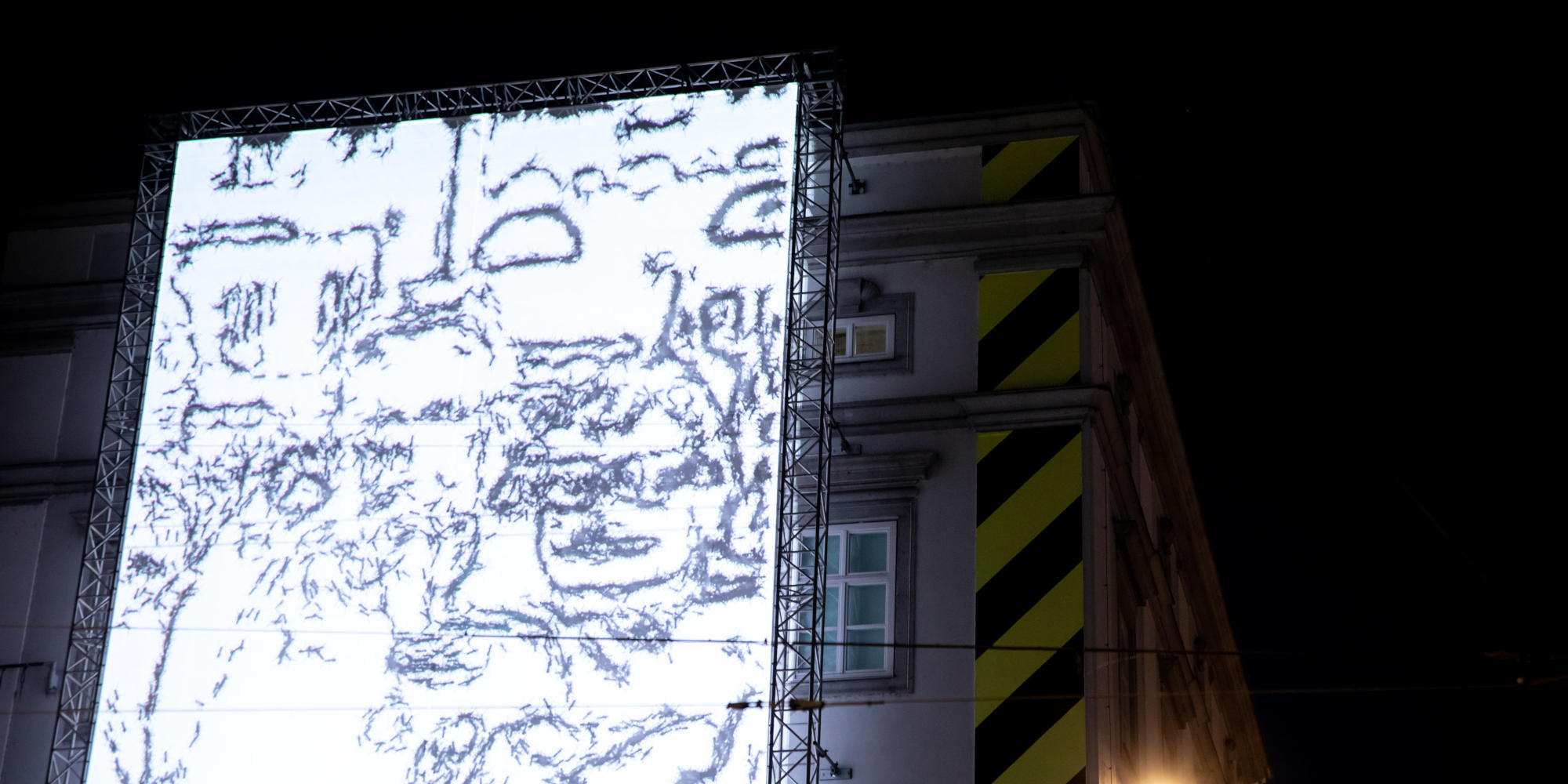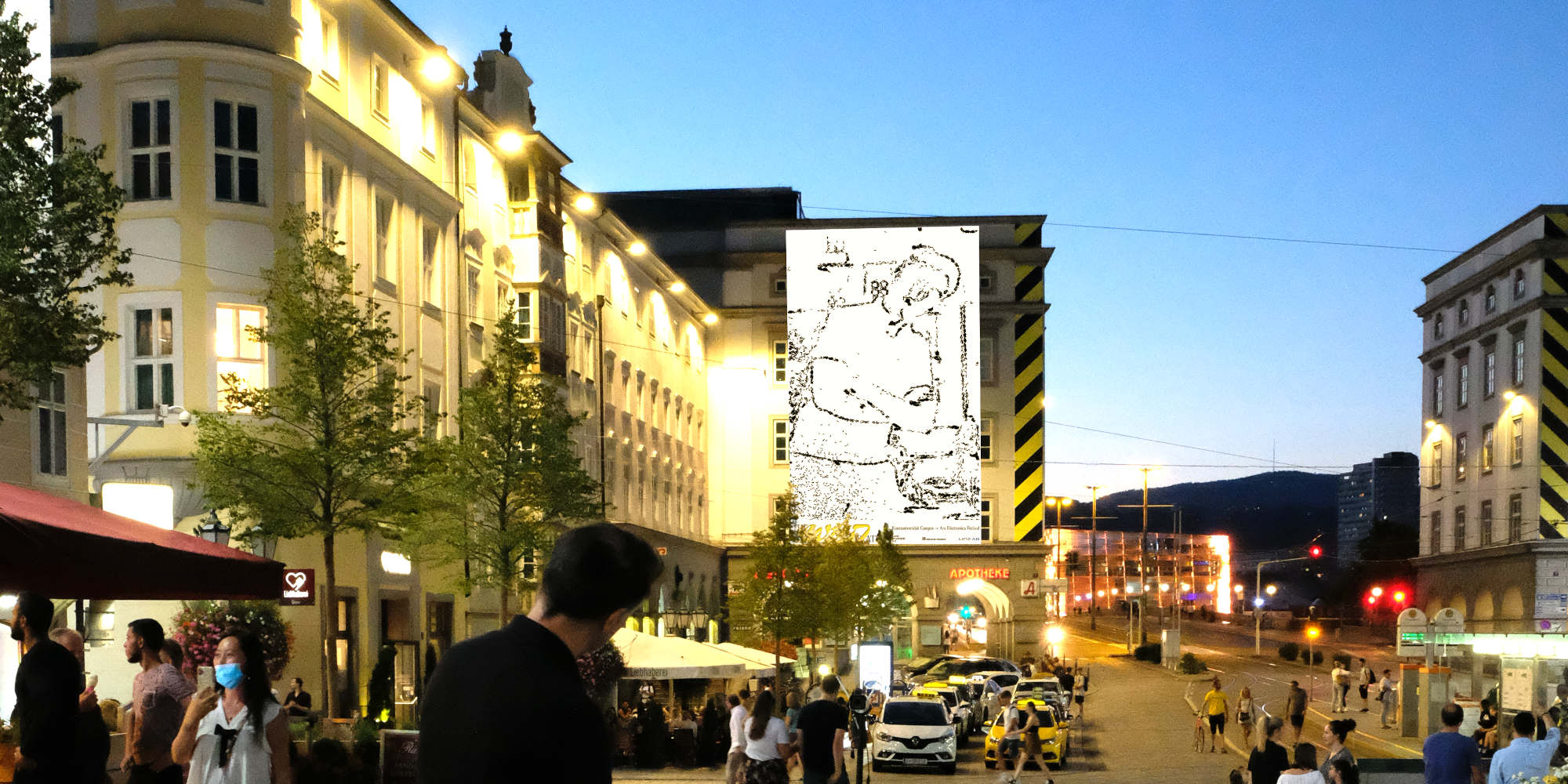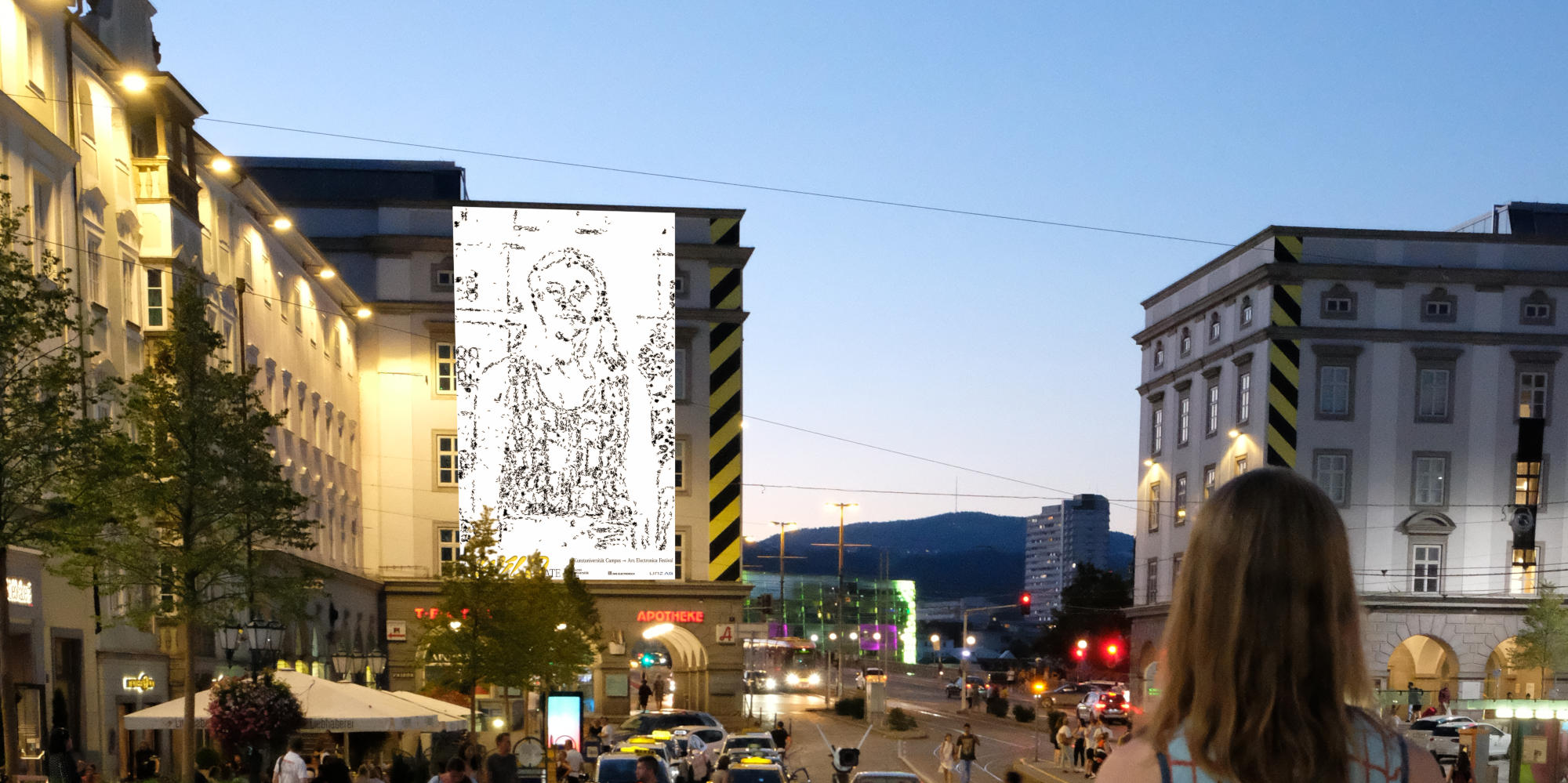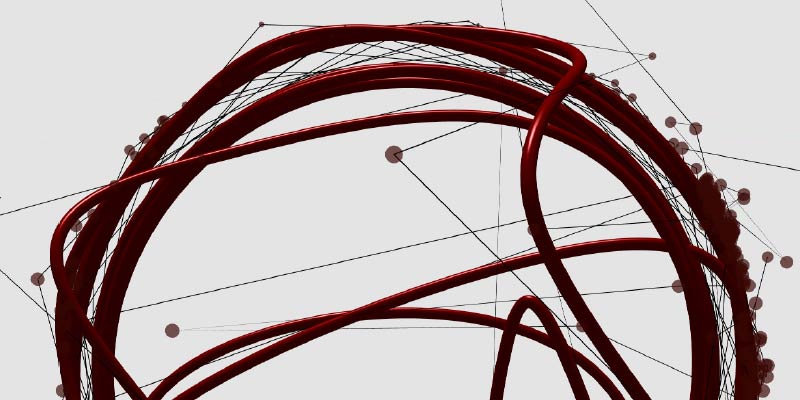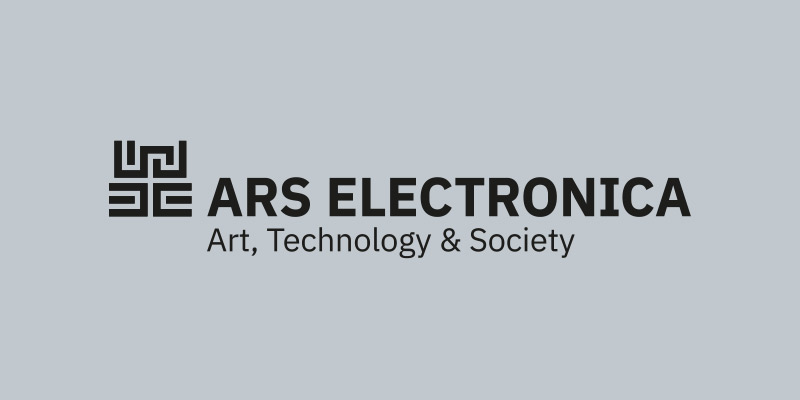The main location of the University of Art and Design Linz are the two monumental “bridge head buildings” that interface the main square of Linz with the Danube River. The square is where we find the city’s hustle and bustle, the weekly market and many shops, as well as the mayor’s seat; it symbolizes the local, physical community. On the other side of the building, the Danube presents itself as an ever-flowing, massive stream, the place where, historically, goods and news were received and dispatched. Art is, literally and figuratively, the connection between the local and the global here.
In this unique location, the facade of Hauptplatz 8 turns into a virtual window that opens to show the world beyond the square. On several evenings during the Ars Electronica Festival, after the sun has set, different audiovisual projects are projected onto the media facade, inviting festival visitors and passers-by to enjoy and interact with them from near and far. And though originally conceived as an installation planned solely for THE WILD STATE during Ars Electronica, we might see it again in the future.
| 10. – 12.09.2020, 20:00 / 21:00 / 22:00 | The Transient Shadows (2020) Hauptplatz 8/ Façade |
| 10. – 12.09.2020, 20:10 / 21:10 / 22:10 | Antopolis (2020) Hauptplatz 8/ Façade |
The Transient Shadows (2020)
DEPART (AT)
When DEPART were invited to devise an audiovisual artwork for the main square in Linz on the occasion of Ars Electronica Festival 2020, they were immediately inspired by the opportunity to deal with its 18th century baroque plague column. The idea obviously suggested itself by looking at the pandemic situation today, and since the University of the Arts is located quite opposite the column in the so-called „Brückenkopfgebäude“, DEPART decided to conceive this piece as a sort of dialogue between both landmarks. The topic of a virus predominantly manifesting itself as a respiratory disease figures into the piece, as well as the fugacity of human life and how it is dealt with during plagues or pandemics. At the same time, “The Transient Shadows” echoes the history of Linz as an industrial city through modern technological developments, like cloud computing. To varying degrees, obelisks have always been part of DEPART’s artwork, and since the plague column -with its bulbous shapes- resembles a column of rising smoke frozen in time, this seemed a self-evident way to provide a main aesthetic theme. The audiovisual sculpture is oscillating and behaves like a respiratory cycle. Like a lung, it expands and collapses, forming lithoidal structures that vanish over and over again. The contradiction of an ephemeral substance that looks like a heavy solid, and the fluid motion of a seemingly rigid body provide a sort of microdramaturgy. It serves as a metaphor for the topics mentioned above, communicating with the actual column in the square on structural and symbolic levels.
https://ausstellungen.ufg.at/wildstate/project/the-transient-shadows/
Antopolis (2020)
Laurent Mignonneau (FR/AT), Christa Sommerer (AT)
During the COVID-19 crisis, we are reminded of the fragility of our ecosystem. A tiny virus was able to bring human activity to a near standstill, causing the global lockdown of massive industries and economies. While we humans are confined to our homes, other parts of nature recover and even thrive. The air in heavily industrialized regions has become cleaner, the sky more blue; insects, birds and wildlife returned to the cities, and human caused pollution is, in many cases, significantly reduced.
Many people have suddenly realized the importance nature has in our physical and mental health; short walks in parks or nearby urban forests are essential to keep sane in times of quarantine.
The interactive media facade Antopolis wants to remind us of the interconnectedness between humans and nature. The crisis revealed we are not the crown of creation, not a separate and immune entity, and that we cannot keep exploiting natural resources unrestrained. The Anthropocene seems to have come to an end, and we need to reevaluate the position and responsibilities of humanity.
In Antopolis, ants invade the city and look for human activities. They crawl towards any man-made shape, following humans, cars and any object that moves or stands in the city. All these artefacts become their resources. Through swarming behavior, the artificial ants create complex shapes and trails, beautiful and eerie at once. In our world and Antopolis, even a minuscule virus or insect has the power and potential to profoundly impact and transform human activities, as we are all just a part of one large but fragile ecosystem.
